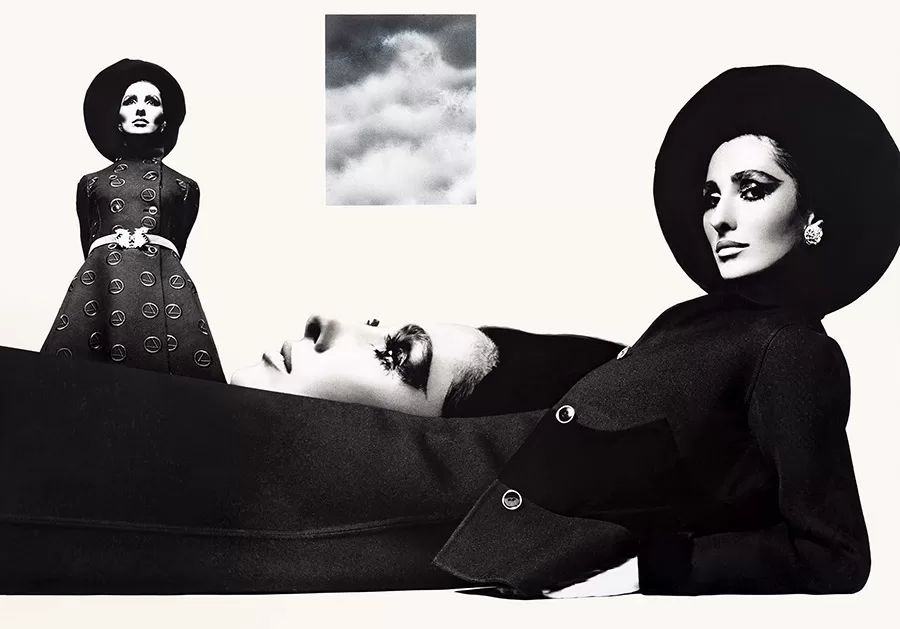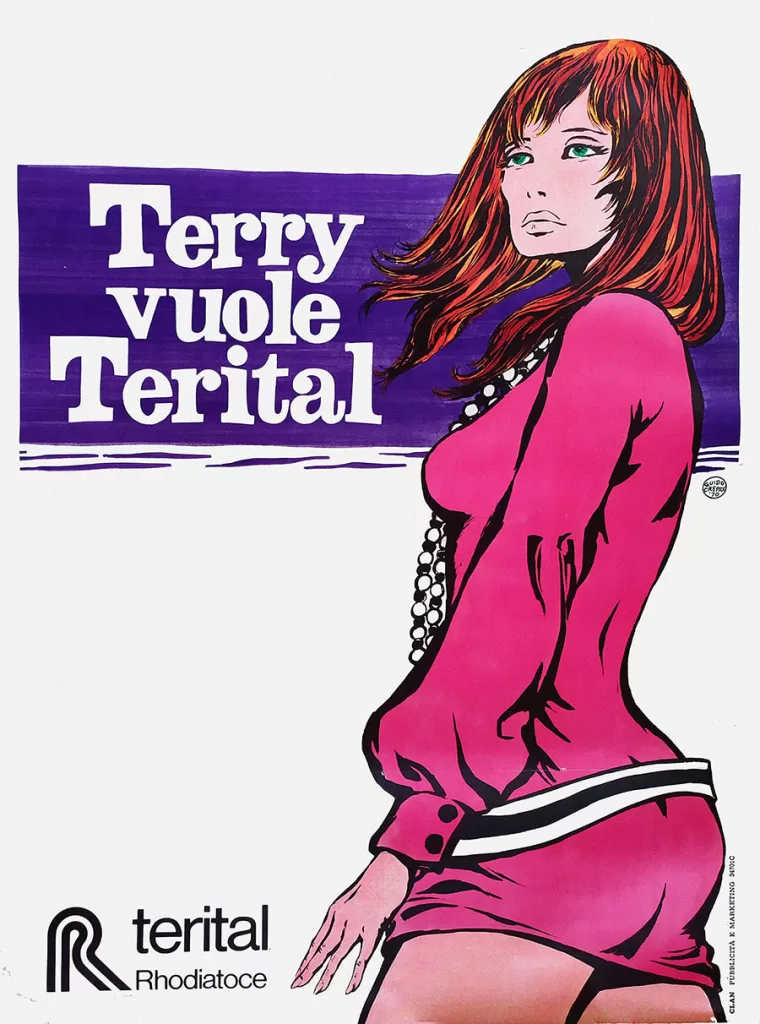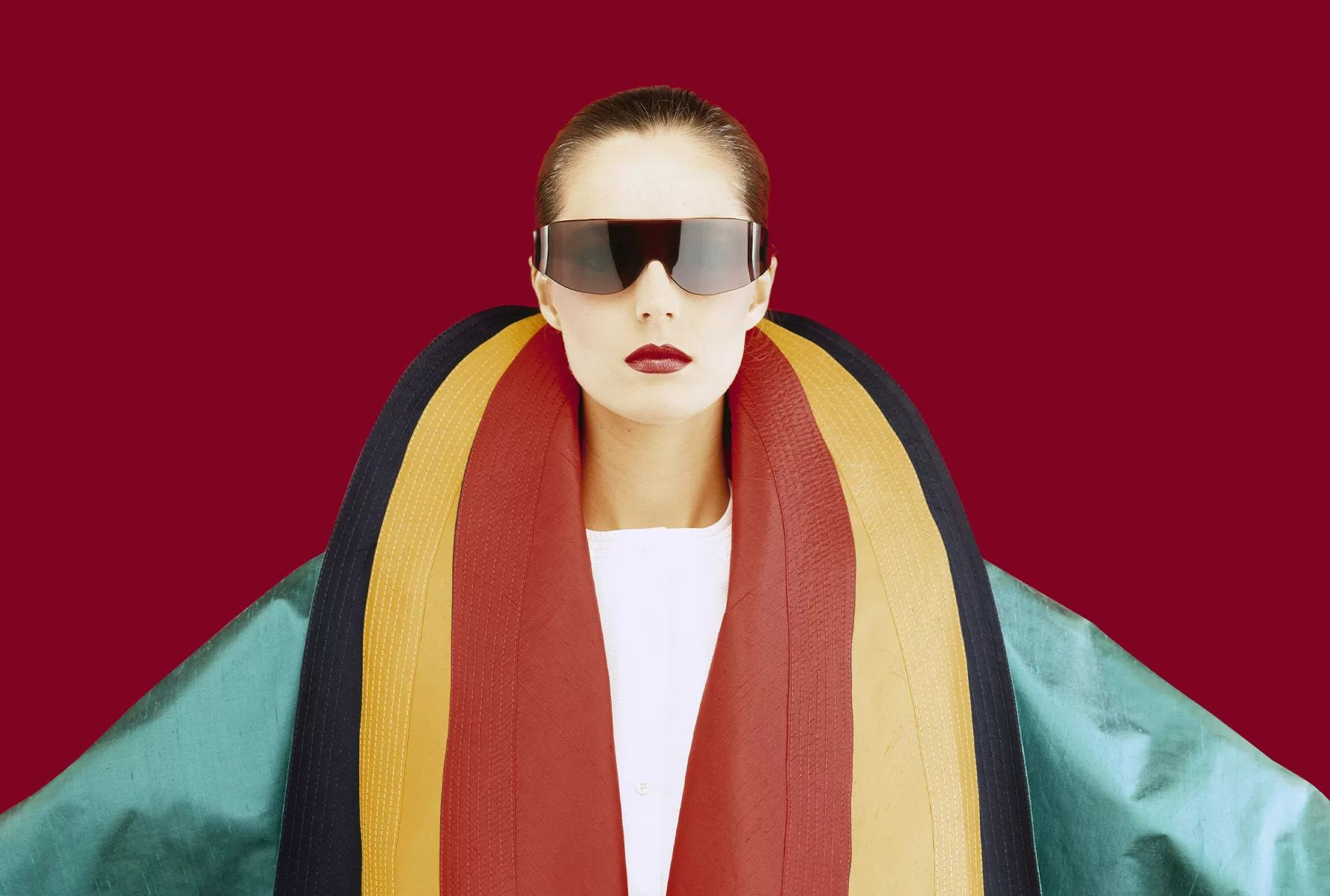13 September – 14 December 2025
Fondazione Magnani-Rocca, Mamiano di Traversetolo – Parma
“You shall have no other style before me.” It could have been the mantra of a 1990s supermodel, one of those propelled to global fame by the visionary genius of Gianni Versace. A declaration that encapsulates fifty years that transformed Italian society, echoing the provocative slogan “Thou shalt have no other jeans before me” from Oliviero Toscani’s iconic campaign for Jesus Jeans.
From 13 September to 14 December 2025, the Fondazione Magnani-Rocca – the renowned Villa dei Capolavori in Mamiano di Traversetolo, near Parma – presents a major exhibition devoted to the evolution of fashion advertising in Italy during the second half of the twentieth century. The show unfolds in the grand rooms adjoining those that house the museum’s permanent masterpieces by Renoir, Monet, Cézanne, Titian, Dürer, Van Dyck, Goya, Canova, Morandi, and many others.
This exhibition offers a penetrating reflection on how fashion and advertising have shaped not only the marketplace, but Italian culture as a whole.
Over three hundred works – including posters, magazines, commercials, photographs, films, videos, promotional merchandise, and the legendary Fiorucci stickers – trace an unprecedented journey through half a century of transformations in the collective imagination, combining a philological rigor with a poetic gaze on the history of fashion and its communication. Cinema and television become its mirrors, showcasing commercials that have entered the realm of cultural myth.

From 1950 to 2000, Italian style took the world by storm.
Armani, Benetton, Dolce & Gabbana, Emilio Pucci, Fendi, Fiorucci, Gianfranco Ferré, Guarnera, Gucci, Marina Rinaldi, Max Mara, Moschino, Salvatore Ferragamo, Valentino, Versace, Coveri, Zegna, and Walter Albini were the leading protagonists of Made in Italy during those decades.
The lens of the great masters of fashion photography – Giampaolo Barbieri, Giovanni Gastel, Alfa Castaldi, Maria Vittoria Backhaus – and the illustrations of René Gruau, Sepo, Erberto Carboni, Franco Grignani, Guido Crepax, Antonio Lopez, and Lora Lamm, along with the singular, unsettling vision of Oliviero Toscani, capture an aesthetic that is at once an advertising narrative and a portrait of an era.

Fashion asserts itself as a powerful communication machine, increasingly defined as both a language and a performance of the body. The exhibition explores how fashion and advertising, working in tandem, navigated Italy’s economic, social, and cultural shifts—shaping myths, stereotypes, creativity, and desires along the way.
Post-war Italy entered the scene tentatively, observing the dynamism of American advertising while remaining rooted in an artisanal system of graphic designers, illustrators, and poster artists. Development was slowed by a rigid, didactic media structure: Carosello, with its strict rules and censorship, delayed direct engagement with international avant-gardes. Yet this very slowness helped consolidate a distinctive “Italian” advertising sensibility—a visual and narrative style blending memory, irony, and storytelling.
The real turning point came with private television channels, the arrival of color broadcasting, and the breakdown of monolithic models. Advertising became a pop language—potent, omnipresent, and unapologetically bold. It emerged as a new form of visual art, with fashion as its most vibrant laboratory. A major section of the exhibition is devoted to the vision of some of the most iconic television commercials of the era, which have since become part of Italy’s collective imagination.

The 1980s and 1990s marked the peak, witnessing the undisputed global triumph of the Made in Italy brand. Italian fashion ceased to be merely an industry, becoming a storyteller—crafting narratives, personalities, and experiences that generated entirely new worlds of imagery.
The exhibition is the result of collaborations with the Museo Nazionale Collezione Salce in Treviso; the Centro Studi e Archivio della Comunicazione (CSAC) at the University of Parma; the Civica Raccolta delle Stampe “Achille Bertarelli” – Castello Sforzesco, City of Milan; the Alessandro Bellenda Collection – Galleria L’IMAGE in Alassio (Savona); Mirko Morini – Tortona4arte in Milan; Andrea Re – Milano Manifesti; Giuseppe Moraglia – L’Afficherie in L’Aquila; Marco Cicolini – Libreria Antiquaria Piemontese in Turin; as well as corporate archives and important private collections.
For the film section, the show benefits from the contribution of the Archivio Generale Audiovisivo della Pubblicità Italiana and the personal involvement of its Founder and Director, advertising historian Emmanuel Grossi.
The Barilla Historical Archive has made available several spectacular Carosello segments featuring Mina (1965–1970), wearing costumes designed by Piero Gherardi—Fellini’s celebrated costume designer—and other renowned couturiers.
Curated—like the previous chapter dedicated to 1850–1950—by Dario Cimorelli, publisher and communication expert; Eugenia Paulicelli, Professor and founder of the Fashion Studies programme at the Graduate Center and Queens College, City University of New York; and Stefano Roffi, Scientific Director of the Fondazione Magnani-Rocca, the exhibition is accompanied by a richly illustrated catalogue published by Dario Cimorelli Editore. In addition to reproducing all works on display, it features essays by Eugenia Paulicelli, Silvia Casagrande, Vanessa Gavioli, Emmanuel Grossi, Chiara Pompa, and Emanuela Scarpellini.
The Fondazione Magnani-Rocca in Mamiano di Traversetolo houses one of the most important privately formed art collections in the world.
The Villa dei Capolavori, the Foundation’s headquarters, displays the works once owned by Luigi Magnani, including masterpieces by Monet, Renoir, Cézanne, Goya, Titian, Dürer, de Chirico, Rubens, Van Dyck, Filippo Lippi, Carpaccio, Burri, de Pisis, Tiepolo, Canova, and the most significant collection of works by Giorgio Morandi.
Set amidst the Parma countryside, the Villa retains the timeless charm of its illustrious guests, furnished in Neoclassical and Empire style, and surrounded by the Romantic Park—a vast English-style garden with exotic plants, monumental trees, and magnificent white and multicoloured peacocks. Recently restored thanks to PNRR funding, this historic park is unique for its exceptional layering: few places in Italy can offer such a complete testimony to the evolution of garden art. Three visions of landscape design coexist harmoniously here: the formal nineteenth-century garden commissioned in 1819 by General Filippo Paulucci delle Roncole; the romantic English-style park created by Marianna Panciatichi between 1850 and 1860; and the Italian-style garden designed by Luigi Magnani in the 1960s.
Completing this living synthesis of three centuries of landscape design is a contemporary garden inspired by the New Perennial Movement, reinterpreting the relationship between nature, aesthetics, and culture through an ecological and sensitive lens.
Fashion and Advertising in Italy 1950–2000
Venue: Fondazione Magnani-Rocca, Via Fondazione Magnani-Rocca 4, Mamiano di Traversetolo (Parma), Italy.
Curators: Dario Cimorelli, publisher and communication expert; Eugenia Paulicelli, Professor and founder of the Fashion Studies programme at the Graduate Center and Queens College, City University of New York; Stefano Roffi, Scientific Director of the Fondazione Magnani-Rocca.
Catalogue: Published by Dario Cimorelli Editore, featuring essays by Eugenia Paulicelli, Silvia Casagrande, Vanessa Gavioli, Emmanuel Grossi, Chiara Pompa, and Emanuela Scarpellini.
Press Office: Studio ESSECI – Sergio Campagnolo
Contact: Simone Raddi – [email protected]
Tel. +39 049 663499
Press kit and images: www.studioesseci.net
WHERE
Fondazione Magnani-Rocca
Via Fondazione Magnani-Rocca 4
Mamiano di Traversetolo (Parma), Italy
WHEN
13 September – 14 December 2025
Open also on 1 November and 8 December.
OPENING HOURS
Tuesday to Friday, continuous hours 10:00–18:00 (ticket office closes at 17:00)
Saturday, Sunday, and public holidays, continuous hours 10:00–19:00 (ticket office closes at 18:00)
Closed on Mondays.
ADMISSION
€15.00 – valid also for the permanent collections
€13.00 – groups of at least fifteen people
€5.00 – school groups
INFORMATION AND GROUP BOOKINGS
Tel. +39 0521 848327 / 848148
[email protected]
Guided tours of the exhibition with a specialist guide:
Saturdays at 16:00; Sundays and public holidays at 11:30, 15:30, and 16:30.
Booking is possible at [email protected] or directly at the museum entrance (subject to availability).
Cost: €20.00 (includes admission and guided tour).
RESTAURANT
Tel. +39 0521 1627509
WhatsApp: +39 393 7685543
Email: [email protected]
PARTNERS
The exhibition is made possible thanks to:
Media partners: Gazzetta di Parma, Kreativehouse.
In collaboration with: AXA XL Insurance and Aon S.p.a., Angeli Cornici, Bstrò, Cavazzoni Associati, Società per la Mobilità e il Trasporto Pubblico..


